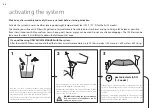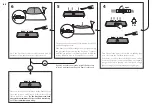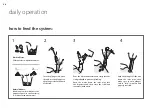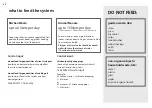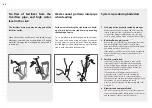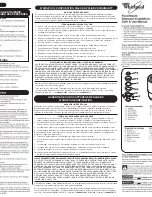
45
FEATURES
APPLICATION METHOD
APPLICATION RATE
PROPERTIES
HomeBiogas fertilizer is a high quality liquid fertilizer produced from HomeBiogas systems. When applied, the fertilizer can accelerate plant growth and increase resilience to diseases.
The fertilizer is essentially the discharge from the digester tank. This discharge, the result of a long digestion process, is packed with various macro & micronutrients in the right form
for rapid absorption by plants. The presence of both macro & micronutrients makes HomeBiogas fertilizer a good choice for most gardening and small-scale agricultural purposes.
HomeBiogas fertilizer, while providing many benefits to plants, does not help to improve soil properties. Hence, it should be paired with some amount of soil amendment for best
performance.
HomeBiogas fertilizer has the following properties tha
t differentiates it from many
commercial fertilizers:
Each biogas system produces fertilizer with slightly different nutrient contents,
depending on the kind of organic matter fed to the system and its bacterial substrate.
The manual’s fertilizer usage instructions accounts for this potential variation -
however, when using the liquid fertilizer, attention should be paid to the appearance
and health of the fertilized plants. Reduce feeding volumes or stop applying fertilizer
if the plant’s health is negatively affected.
HomeBiogas fertilizer can be applied to plants via two methods: root drench or
foliar spray.
The fertilizer should be diluted with water at a 5:1 ratio of water to fertilizer before
use.
The following is a suggestion for rate of application to plants.
•
Contains many macro and micronutrients for a more well-rounded fertilizer.
•
Nutrients exist as solute in the fertilizer and are quickly absorbed by plants.
•
Liquid form allows quick, easy application onto plants.
•
Root drench: pour fertilizer directly into surrounding soil.
•
Foliar spray: use a spray bottle to spray fertilizer onto plants’ leaves.
•
Flowers: 3.5 litre weekly per plant.
•
Trees: 15-20 litre weekly per plant.
•
High-nutrient-need vegetables: 5-10 litres weekly per plant.
•
Low-nutrient-need vegetables: 3-5 litres weekly per plant.
Nitrogen
Phosphorus
Potassium
Micronutrients present
E. Coli
Fecal Coliforms
E. Coli O157:H7
L. Monocytogenes
Salmonella
V. Cholerae
260mg/L
20mg/L
275mg/L
Ca, Mg, S, B, Cu, Fe, Mn, Zn
<10 cfu/100mL*
<10 cfu/100mL*
none
none
none
none
*less than 10 colony-forming units - practically undetectable in laboratory numbers
HomeBiogas fertilizer
Summary of Contents for HBG 2.0
Page 1: ...1 HB2 OM 050221 2021 HOMEBIOGAS VERSION 050221 HBG 2 0 HOUSEHOLD BIOGAS SYSTEM OWNER S MANUAL ...
Page 13: ...13 i ii iii x4 parts bag 1 i i ii iii LUBRICANT LUBRICANT ...
Page 15: ...15 1 parts bag LUBRICANT LUBRICANT ...
Page 16: ...16 x2 Inlet sink orientation short cord plunger slot towards back long cord towards front ...
Page 19: ...19 check filled digester for leaks contact HomeBiogas if any leaks are seen ...
Page 20: ...20 ii i LUBRICANT x2 ...
Page 21: ...21 i ii iii v iv 90 ...
Page 22: ...22 x40 i ii iii use dry sand only sand bags ...
Page 23: ...23 2 top x16 left right x16 back front x8 1 2 3 x2 x8 x8 x2 x2 x2 x2 x2 x2 x2 x2 x2 x2 x2 ...
Page 24: ...24 iii ii GAS FILTER i remove 2 protective stickers from cover base of gas filter ...
Page 29: ...29 ...
Page 37: ...37 ...
Page 43: ...43 ...
Page 47: ...47 ...


